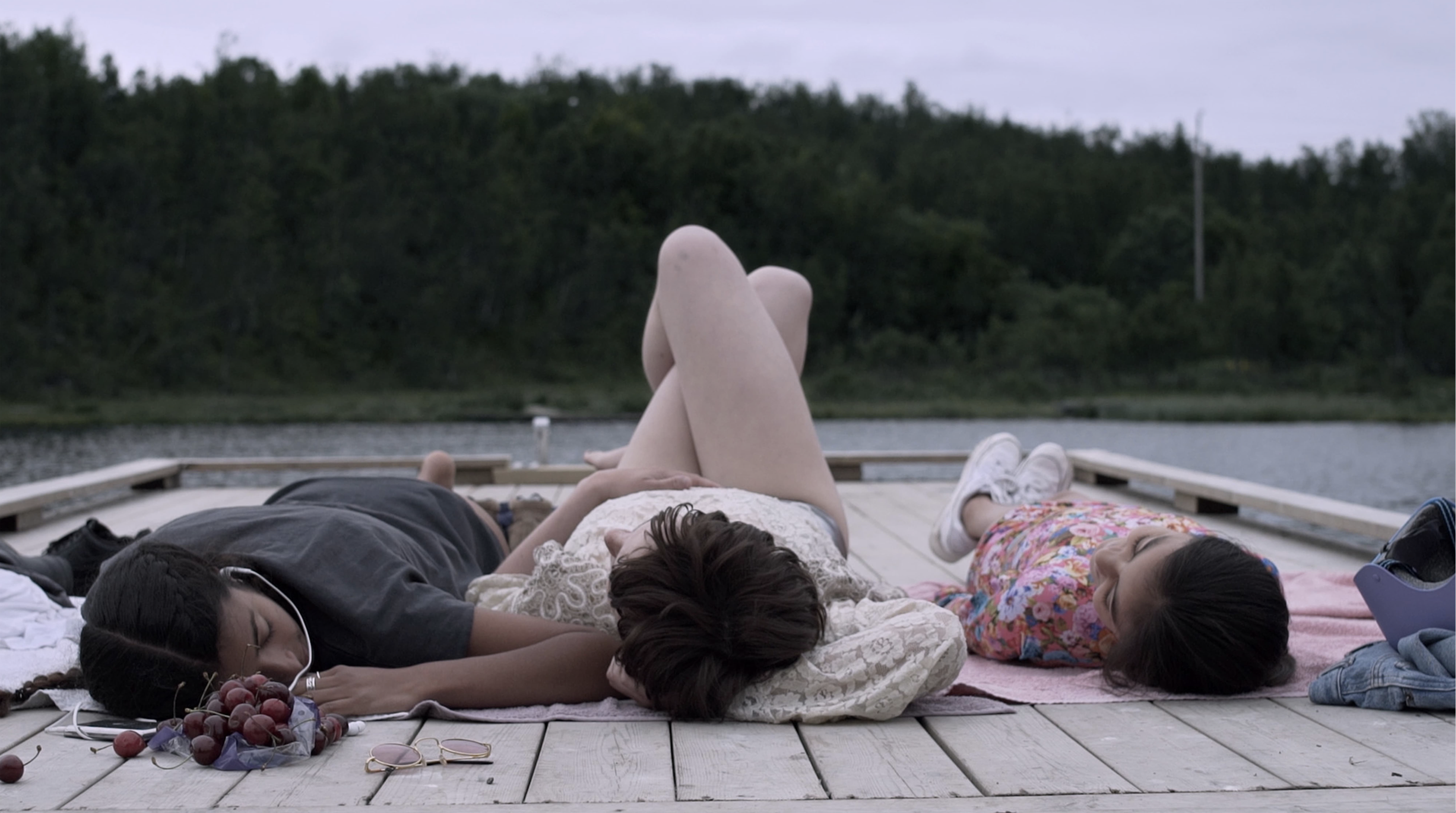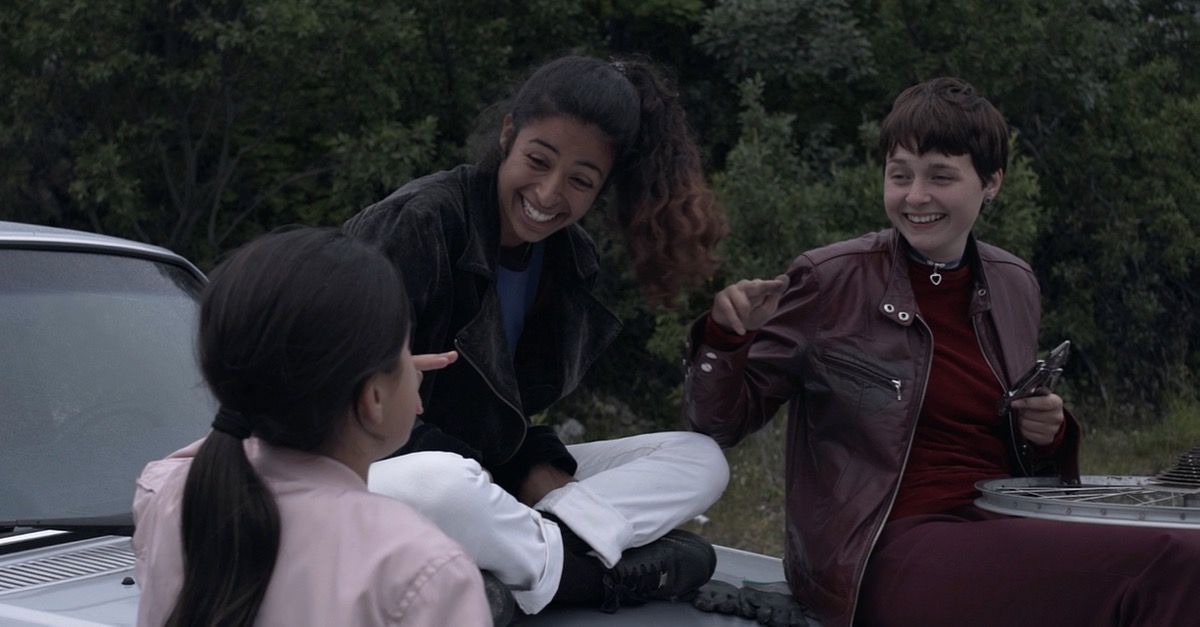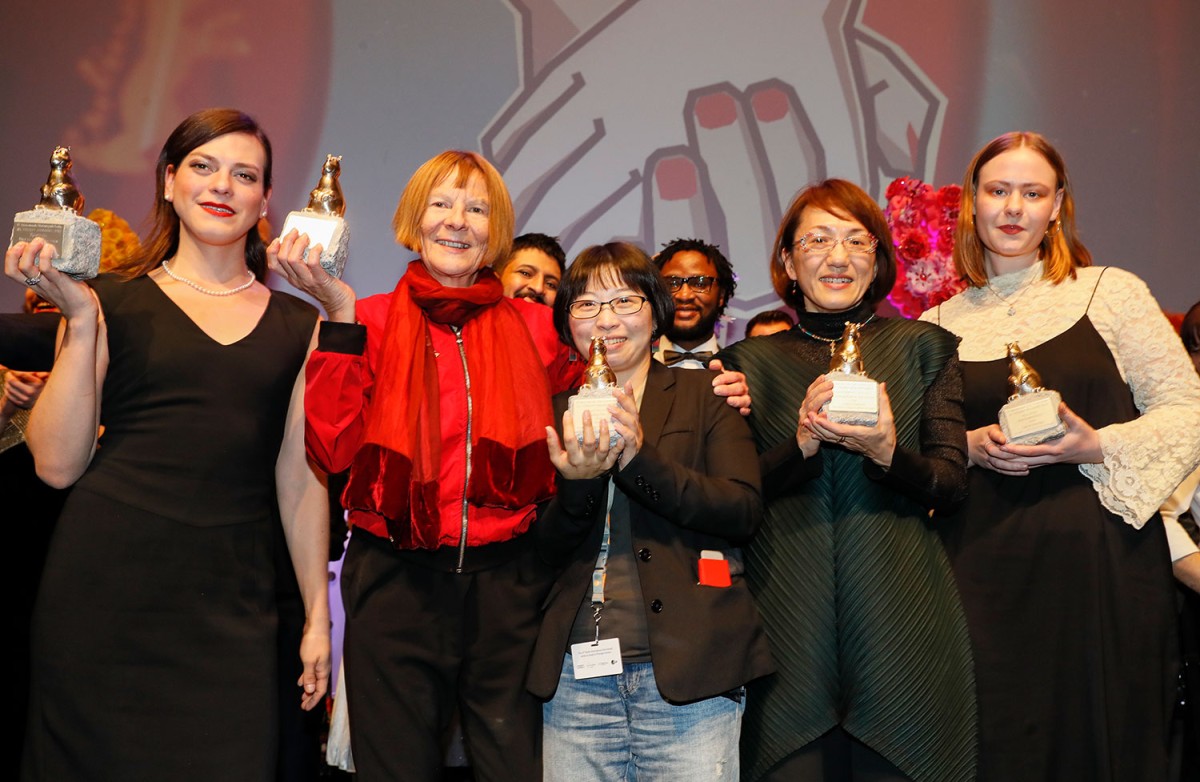Spotlight on Berlinale Shorts: Lia Hietala’s “My Gay Sister”
Swedish director Lia Hietala’s short film My Gay Sister (originally titled Min Homosyster; 2017; 15 min) follows 10-year-old Cleo as she confronts society’s early expectations for her to define her sexuality. The film premiered in the Generation section at Berlinale 2017, and won the Teddy Award – a prestigious prize for films with LGBTQ topics – for Best Short Film. Lia is currently working on another short and a feature-length project, both of which tell stories centered on LGBTQ characters.
At Berlinale 2017, ScreenPrism chatted with director Lia Hietala. We discussed the societal pressure to fit into categories of identity, the talented 10-year-old lead Juliette Safavi, Hietala’s advice for short filmmakers, and much more.
ScreenPrism: What inspired you to make this film?
Lia Hietala: My inspiration came both from own experiences with sexuality, and the journey I’ve gone through to realize that none of the words we have (heterosexual, homosexual, bisexual and many more…) describe me – and that I’m okay with that. I was also inspired by the common assumption we have that children are heterosexual until they tell us differently. I wanted to bring light upon the fact that children don’t think about attraction from a grown-up perspective, but they think about love. They can distinguish different feelings of love in a way that I believe we’re not recognizing.
 Tina Pourdavoy, Erika Coleman and Juliette Safavi in “My Gay Sister” (2017)
Tina Pourdavoy, Erika Coleman and Juliette Safavi in “My Gay Sister” (2017)
I was amazed by Juliette Safavi’s acting skills. How did she get involved in the project? What was the dynamic like on set with Juliette, Erika Coleman and Tina Pourdavoy?
I was street casting and I spotted Juliette outside of a supermarket in Stockholm. I had already casted Tina and was looking for girls who looked like her, so it was obvious that I had to try Juliette out. We met for a casting session the following week, and after that I kind of just knew that we found the main character. She was so spontaneous, and you could see that she enjoyed playing around with the scenes we were trying out. She was very easy to work with from the start. She took everything very seriously, and that is something I treasure in children – how they can tell when something is important.
Before we went to Tromsö to shoot the film, I got together with Karin Stenwall (the cinematographer) and the three actors to rehearse some scenes. We wanted to see if our visionary ideas worked, and most importantly we wanted to build trust. On set, I depended a lot on both Tina and Erika to keep close and open relationships with Juliette. I needed them to be Juliette’s safe people so I could be the one that pushed her, and they did an amazing job making her feel comfortable all of the time. They made my job easy because a lot of the scenes had a core but the dialogue was improvised, and [Juliette] could just take off and go in so many different directions. The scenes really came to life when we got on set and took new turns that weren’t written in the script. I had so much to choose from when we started editing, and as a director that is such a blessing.
Cleo struggles to define her sexuality at an age where the concept of sexuality is still so abstract. Are you commenting on societal expectations to fit into clear-cut categories of identity? What would you say the message of the film is?
I would definitely say that the film comments on societal expectations to fit into clear-cut categories. You’re supposed to know and decide as early as possible which [sexual orientation] you identify with. There’s a huge amount pressure on people to decide and stick with it. For me, that kind of labeling is terrifying because sexuality is fluid. In the beginning, I wanted to explore bisexuality in the film. Now, I feel that it circulates more around homosexuality than I had in mind – but at the same time, it’s just a story of love and emotions. Majken, the bigger sister’s girlfriend, is the key to the film’s message. She tries to have this open, non-judgmental approach towards Cleo, and I think she manages to get that through. That enables Cleo to open up.
What was your experience like at Berlinale? Did you get a chance to see any other shorts or features?
I had an amazing time at the Berlinale. The Generation team took great care of us. It was a fantastic first experience at the festival! Regarding films, I saw the short films in our section and the Swedish feature Sami Blood (2016) that I’ve been waiting to see for over a year, so that was awesome. But other than that I had a deadline on a new project, so I was working from Berlin and was quite filled up with panel discussions, interviews and networking.
 “My Gay Sister”
“My Gay Sister”
I read that you’re currently working on another short and a feature. Can you talk a bit about these projects? Personally, I would love to watch a feature-length version of My Gay Sister.
Currently I’m working together with the Swedish documentary filmmaker Hannah Reinikainen Bergenman on a short documentary about a young friendship relationship between two LGBTQIA+ teenagers in Stockholm, Sweden. We’re interested in portraying and exploring a friendship in a similar way to how love stories are often told.
The feature I’m working on is a love story between two women that breaks down because of a Swedish law from 2016 that controls couples’ rights to assisted reproduction. Now both people in the relationship need to be 25 to be approved. The law controls how people live their lives and the stages at which they can build a family. It also [perpetuates] society’s prejudiced opinions about large age differences in relationships.
 2017 Teddy Award winners Daniela Vega (“A Fantastic Woman”), Monika Treut (Special Teddy Award), Hui-chen Huang (“Small Talk”), Naoko Ogigami (“Close-Knit”) and Lia Hietala (“My Gay Sister”)
2017 Teddy Award winners Daniela Vega (“A Fantastic Woman”), Monika Treut (Special Teddy Award), Hui-chen Huang (“Small Talk”), Naoko Ogigami (“Close-Knit”) and Lia Hietala (“My Gay Sister”)
What do you think makes a good short film?
I think good short films manage to tell a whole story in the short format. They don’t leave the audience unsatisfied or try to push a bigger story into what is suppose to be short. In other words, I think one should watch out for making a short film into a pilot when that’s not the purpose.
What advice would you give other short filmmakers?
Find a story that fits into a short format and work with that. Don’t try to expand or widen; try to be distinct and strict with what’s important for the story to move forward. And most importantly, work with people who inspire you and that you can inspire. As a director, you are the red thread and a kind of leader, not an artist who can make all decisions on one’s own. The best directors have the ability to verbalize ideas and guide other team members in the direction of the mutual vision.
Don’t be afraid to [reach out to] people whose work you admire. Be bold, believe in your project and sell it! We are all artists, and a good project is hard to say no to. The pay isn’t always the key to get people involved, even if it’s important to value people’s work.

